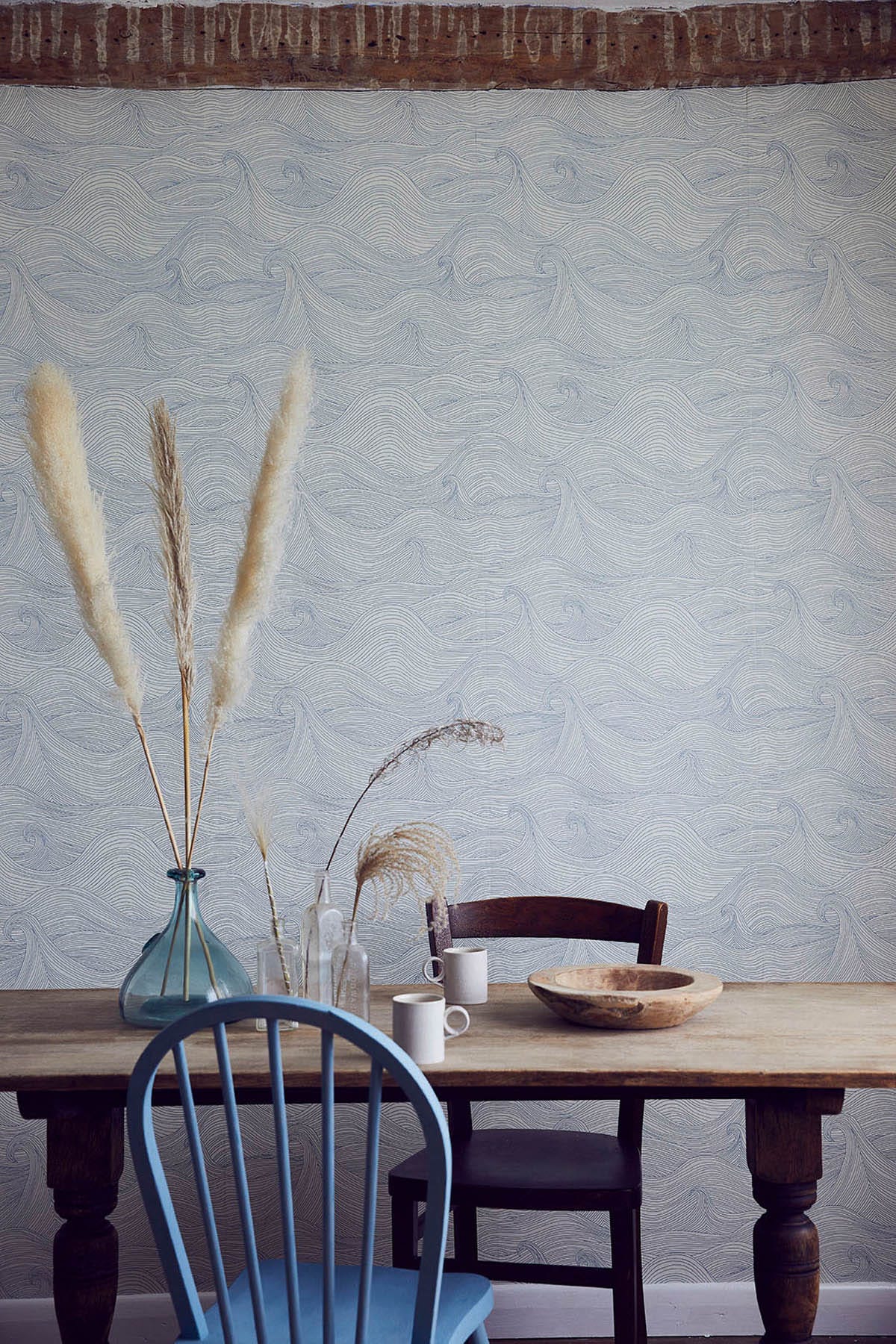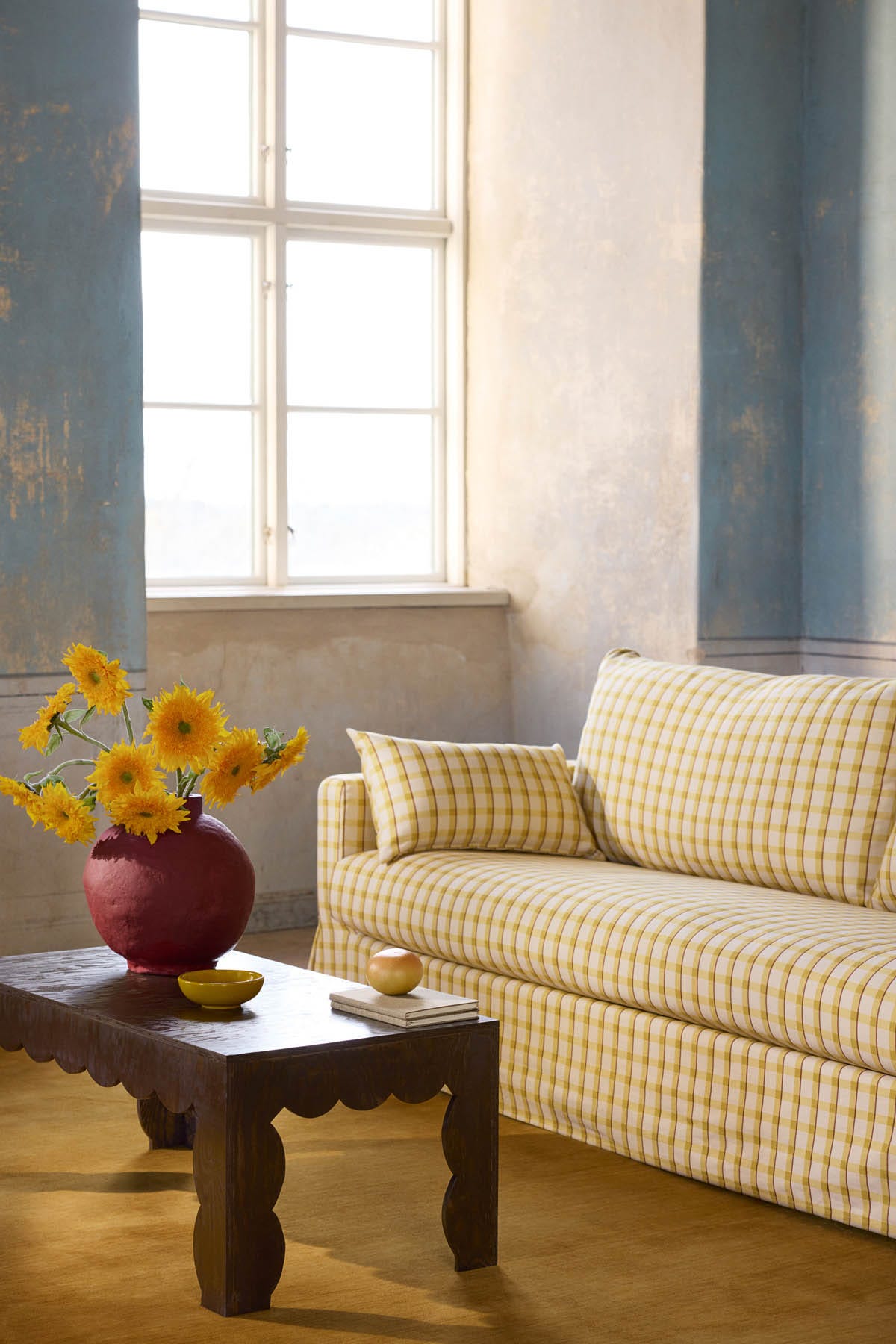The Difference Between Clean and Clear
Presence, Absence, and What Can't Be Organized Away
Naya was a client a few years back who had both very specific and very undefined ideas about how to redesign her living space after years of discontent about it. The main complicating factor was a memory of growing up in a home where her mother had put things together in a really nice way that she was too young to really analyze. Then her mother passed when she was still a young teenager. So on the one hand, there's a felt sense of what was right about the spaces she grew up in. On the other, she couldn't pin down an overarching design philosophy. On the one hand, she had several of the items that had also been in her childhood homes. On the other, their mere presence did not automatically create the style she was looking for.
We discussed and sampled color at length. The process made me dig deep into color theory. She tried several of the proposed options. None of them worked. Then she needed to take a break -- school was starting for her kids. After a time, she reached out to let me know she had found the color. It was a warm white -- but not too warm. I was surprised, since we had focused so much on color. But I was happy that she felt some resolution. Over the intervening years, she has posted images of her space on social media and I can tell she has made huge progress on clarifying her style. It is unique in its combination of traditional and spare notes. It's light and thoughtful. It's a nod to old things but totally fresh and up to date in quality of installation.
I loved all of this in so many ways, especially that my part was in a supporting role and the result was entirely her accomplishment. I can only assume her confidence in her process is stronger now. Because she is really hitting it out of the park.
How she got there is not really something I can address, because I was not working with her directly when her ideas started to gel and manifest. I was there for the nebulous parts, the unknown parts. When looking around her space, I could see what she was talking about. It was clean. The pieces were nice. The sofa had just been reupholstered in a fabric color she specifically remembered her mother had in her childhood living room. Why weren't things pulling together?
Looking at her living room, I could tell we hadn’t nailed it. It was a moment. I really hoped the softer peach was going to work with the dusty rose of the sofa. It didn’t. I didn’t know Naya well enough to dig into where she was in grieving the loss of her mom. I knew she loved her a lot. But grief is not a color theory issue – it’s an energetic one.
This is the difference, insofar as we can pinpoint it, between having a clean home and having a clear home. The largest unspoken element was the presence and absence of Naya's mother, the fond memories of her, the physical items present in the space she left behind, and what all of this means to Naya now.
The criss-crossing of memory, loss, the present moment, and what this means for our interior space is more than we can pull together in a color palette, even if it's a really nice one! The processes of interior design can help, certainly. There's nothing like having a structure to lean on when there's so much untethered energy. But we also need a way to be with that untetheredness. I don't know what to call it, really. The things that cannot be pinned down.
I love having a sanctuary spot in my home for this reason. It's a calm place to put myself. Again, it's a kind of structure, something to lean on. When my Dad passed and I returned home for the first time, putting his name on my altar and sitting with him every morning was an essential practice while the grief was acute. Now it has become a touchstone for an ongoing relationship to him, even though he's no longer here physically. It's a place where I can sit down and remember him. And sort through complicated feelings and emotions. And do some chanting as needed.
The word "clear" has this association with being troubled. Or the opposite of being clear, or having a clear home, is having a troubled, or a haunted, or an occluded home in some way. Whether we are talking about the interior spaces of the home or the interior spaces of the mind doesn't matter. When we do something – a ritual, a practice – to center ourselves and to refocus our mind, the home and the mind are in sync.
This is so zen, really. I remember standing in the zendo in anticipation of a ceremony, and all the students were there in our robes, standing still, our hands in shashu. The ceremony hadn't officially started, but our being there, quiet, ready, and collectively paying attention, transformed the space. Everyone felt this.
The same principle applies when we're helping parents clear family homes, or when we're standing in our own kitchens wondering why everything feels heavy despite being tidy. Sometimes we focus so intently on tidying, or on the objects, that we forget to address what the space itself is holding.
Try this: Stand in your most frustrating room and take three intentional breaths. Ask yourself: "What is this space holding that it's ready to release?" You might be surprised by what surfaces. Maybe it's the argument that happened at the kitchen table last week. Maybe it's the overwhelm of managing everyone else's schedules. Maybe it's grief for a life phase that's ending.
When I returned to Baltimore after my Father’s passing, I walked through my house altered. In fact, my home hadn’t changed, but everything felt completely different. Certain objects leapt out at me – namely, family photos from that side of the family. I was unsettled by it at first. After a while, though, I have come to acknowledge his and the other deceased family members with great affection. I love the lineage I come from. And the house feels full with it.
This is why rightsizing is about so much more than sorting through stuff. When we approach family transitions as purely logistical (pack donate sell, pack donate sell) we miss the energetic component entirely. No wonder it feels so hard. And so overwhelming.
Whether you're standing in a room that feels inexplicably heavy, or helping aging parents transition from the family home, remember: sometimes the most important work happens not with your organizing and schlepping, but with your presence. Clean is about sorting out what no longer serves. Clear is about honoring what does.
How about you? Have you felt this clean-but-not-clear feeling in your home? What has worked for you when trying to move through this?





